Ademco 8DLVAM Vista Automation Module User Manual 800 15629 A VAM ug beta4
Honeywell International Inc. Vista Automation Module 800 15629 A VAM ug beta4
Ademco >
Contents
- 1. Users Guide Rev 042514
- 2. Quick Install Guide
Users Guide Rev 042514
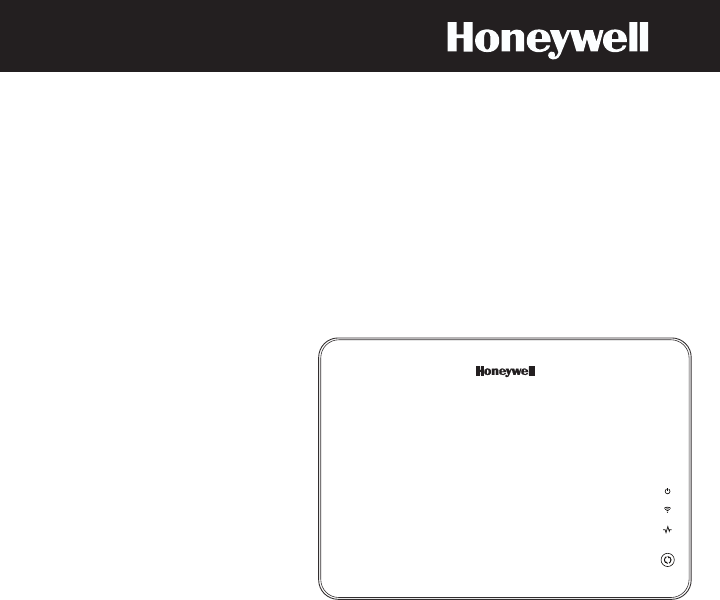
V
VV
V
V
VV
VI
II
I
I
II
IS
SS
S
S
SS
ST
TT
T
T
TT
TA
AA
A
A
AA
A®
®®
®
®
®®
®
A
AA
A
A
AA
Au
uu
u
u
uu
ut
tt
t
t
tt
to
oo
o
o
oo
om
mm
m
m
mm
ma
aa
a
a
aa
at
tt
t
t
tt
ti
ii
i
i
ii
io
oo
o
o
oo
on
nn
n
n
nn
n
M
MM
M
M
MM
Mo
oo
o
o
oo
od
dd
d
d
dd
du
uu
u
u
uu
ul
ll
l
l
ll
le
ee
e
e
ee
e
User Guide
800-15629 12/13 Rev. A Beta 3
EXHIBIT 7-2 CFS8DLVAM / 573F-VAM
PLEASE GO TO THE BOTTOM OF
PAGE 35 FOR FCC / IC AGENCY
STATEMENTS.
– 2 –
PLEASE GO TO THE BOTTOM OF
PAGE 35 FOR FCC / IC AGENCY
STATEMENTS.
– 3 –
TABLE of CONTENTS
INTRODUCTION ........................................................................................................... 5
VAM Features ......................................................................................................... 5
Memory Card .......................................................................................................... 6
Navigating the VAM Menus .................................................................................... 6
Navigation Button Descriptions............................................................................... 7
LED Functions ........................................................................................................ 8
USING CAMERAS (MULTIMEDIA MENU) ................................................................... 9
Viewing Cameras ................................................................................................... 9
Adding Cameras to the System .............................................................................. 9
Removing Cameras from the System ................................................................... 10
AUTOMATION AND USING Z-WAVE DEVICES (AUTOMATION MENU) ................ 11
Manually Operating Devices ................................................................................. 11
Adding (Include/Add) Z-Wave Devices ................................................................. 11
Editing Z-Wave Device Names ............................................................................. 13
Removing (Exclude/Delete) Z-Wave Devices ......... Error! Bookmark not defined.
Abort a Z-Wave Action ......................................................................................... 13
CREATING SCENES .................................................................................................. 16
Definitions of Trigger, Condition, and Action ........................................................ 16
Steps To Create a Scene ..................................................................................... 18
Creating Groups & Rooms ................................................................................... 18
Z-Wave Troubleshooting ...................................................................................... 14
USING THE SECURITY SYSTEM (SECURITY MENU) ............................................. 19
User Codes........................................................................................................... 19
Introduction to Arming and Disarming the System ................................................ 19
Steps to Arm the System ...................................................................................... 19
Arming Multiple Partitions ..................................................................................... 20
Steps to Disarm the System ................................................................................. 20
How to Display Faults (Zones).............................................................................. 21
How to Bypass Zones ........................................................................................... 21
How to Clear Bypassed Zones ............................................................................. 22
Console Emulation Mode ..................................................................................... 22
How to Enter Console Emulation Mode ................................................................ 22
USING TOTAL CONNECT WITH VAM (REMOTE SERVICES) ................................. 23
PLEASE GO TO THE BOTTOM OF
PAGE 35 FOR FCC / IC AGENCY
STATEMENTS.

– 4 –
SYSTEM SETUP ......................................................................................................... 26
Email Setup .......................................................................................................... 26
Remote Access Log In Setup (Account Setup)..................................................... 27
Time and Date Setup ............................................................................................ 27
Options and ECP Address (for Installer use only) .. Error! Bookmark not defined.
Changing the Home Router (Wi-Fi Setup) ............................................................ 28
SOFTWARE UPGRADES ........................................................................................... 30
System Information ............................................................................................... 30
Manual Software Upgrades .................................................................................. 30
Automatic Software Updates ................................................................................ 30
Compatible Z-Wave Devices ................................................................................ 31
NOTES ........................................................................................................................ 32
NOTE: This device is a Security Enabled Z-Wave Controller.
PLEASE GO TO THE BOTTOM OF
PAGE 35 FOR FCC / IC AGENCY
STATEMENTS.

– 5 –
Introduction
The VISTA Automation Module (herein after referred to as “VAM”) provides Z-Wave
automation features to your VISTA
®
security system, allowing control of various Z-
Wave devices including cameras, lights, door locks, and thermostats. VAM does not
have a physical keypad interface, but instead is controlled by using a web browser on
a Wi-Fi
®
enabled computer device that is connected to your home Wi-Fi network.
VAM Features
Feature
Description
Wi-Fi
®
Connection VAM uses your home Wi-Fi network to communicate with
a Wi-Fi enabled device such as a Smartphone, i-Pad
TM
,
Android
TM
Tablet, Blackberry
®
or laptop PC. Your
installer connected the VAM to your Wi-Fi router during
installation. However, if you later install a new router, you
will need to reconnect the VAM to the new router. Refer to
Wi-Fi Network Setup in the System Setup section for
details on connecting VAM to a different router.
Home Automation Control lights, thermostats, door locks, and other Z-Wave
devices automatically and easily add or remove Z-Wave
devices to the system.
Create Automation
Scenes
Define system actions to automatically start when certain
conditions occur. Supports up to 10 scenes.
View Cameras View up to four cameras at the same time.
Supports up to 32 cameras.
Security System Control your security system via VAM menus.
Remote Access Control VAM when away from the premises using a
computer device connected to the Internet.
Remote Services VAM supports remote services so you can control VAM
using Honeywell’s Total Connect
TM
.
Email Notification Receive email notifications when certain events occur.
Notifications can be sent to up to four email addresses.
Switchable Themes Switch from normal view to mobile view depending on the
type of device used with the VAM.
Setup Menus If needed, program various system settings, including time
and date, new router, and remote access log in. Refer to
the System Setup section for details.
UL
Wi-Fi has not been evaluated by UL.
PLEASE GO TO THE BOTTOM OF
PAGE 35 FOR FCC / IC AGENCY
STATEMENTS.
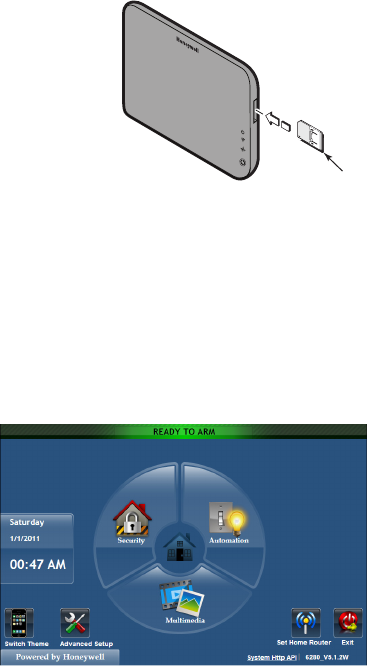
– 6 –
Navigating the VAM Menus
VAM is controlled by using a web browser on a Wi-Fi enabled computer device. Your
installer will have shown you the URL to enter into the browser’s address bar that
opens VAM’s Main menu, and perhaps made a bookmark (favorite) for easy access
later. Navigation begins from the Main menu. Navigate through various sub-menus
by clicking graphical buttons (buttons) to perform a selected function.
From the Main menu you can:
• control your security system
• control/view your cameras
• control home automation such as
lighting, thermostat, and door
locks
• switch from PC view to mobile
view by clicking Switch Theme
button.
• go to advanced setup menus.
NOTE: Depending on the type of computer device being used to access the VAM,
options are selected by either clicking a mouse pointer or touching/tapping the
screen. In this manual, the term “click” is used to indicate this function.
Memory Card
The VAM supports automatic software upgrades.
However, an SD memory card must be installed and
left in the VAM to upgrade the software. Your
installer may have installed the SD memory card for
you. See Software Upgrades section later in this
manual for more information about automatic
software upgrades.
If not already installed, insert the memory card
(SD/SDHC Card) as shown.
• 4GB SD card supplied
• Supports up to 16GB SD Card
IMPORTANT: Avoid touching the contacts on the
SD card.
INSERT
SD CARD
PLEASE GO TO THE BOTTOM OF
PAGE 35 FOR FCC / IC AGENCY
STATEMENTS.
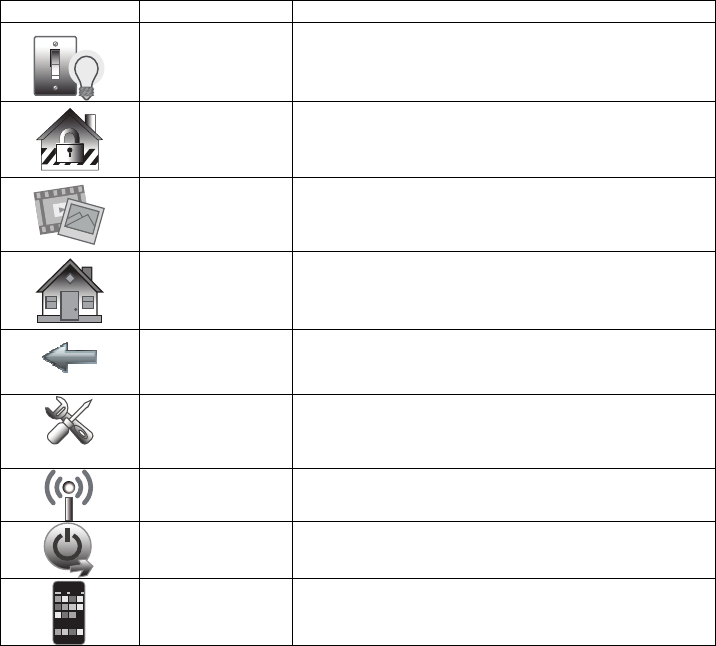
– 7 –
Navigation Button Descriptions
To aid in the navigation through the VAM menus, a set of user-friendly icons
(buttons) has been provided. The appearance and function of these buttons are
described below.
BUTTON
BUTTON
TITLE
FUNCTION
Automation
Used to perform Z-Wave setup, Scene setup,
and Group setup screens to control Z-Wave
devices.
Security
Used to control the security portion of the
system.
Multimedia
Used to view cameras and/or add cameras to the
system.
Home
Returns to the Main menu ("Home") screen.
Back
Returns to the previous screen.
Setup
Used to set various system settings, including
email notification and remote access log in
credentials, time & date, and Wi-Fi setup.
Set Home Router
Accesses the “Set Home Router” screen and
used to connect VAM to your home router.
Exit
Exit the VAM menu.
Switch Theme
Used to set the screen for use on a mobile device
or PC.
PLEASE GO TO THE BOTTOM OF
PAGE 35 FOR FCC / IC AGENCY
STATEMENTS.
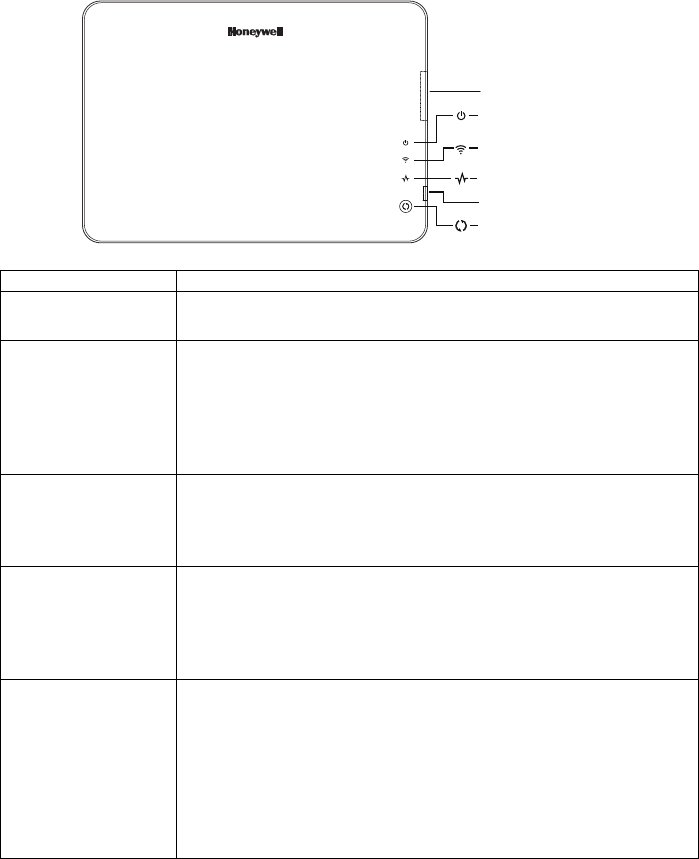
– 8 –
LED Functions
The VISTA Automation Module has three LEDs as follows:
SD/SDHC Card Slot
Power Status LED
Network Status LED
Operation Status LED
Reset Button
WiFi & Factory
Default Button
vam-001-V0
LED/BUTTON
MEANING
Power Status
(green)
Indicates power status. This LED blinks when it is powering
up and booting. Solid green indicates it is fully functional.
Network Status
(blue)
When the Wi-Fi is connected to the VAM, it will show the
Wi-Fi status through the blue LED. The LED is blinking
when VAM is booting and solid blue when VAM is ready as
AP mode (acting as an Access Point) or connects to the
internet as STA mode (station mode, device is connected to
the Wi-Fi router).
Operation Status
(yellow)
Normally off. It will blink slowly if there is no
communication with the control panel or if the Z-wave
controller is not responding. Fast blinking indicates Z-wave
is in enrollment or deletion status.
Reset Button Press to reset the device. The Reset button can also be used
to restore factory default settings. During power up, press
and hold the reset button for more than 5 seconds, the unit
will restore factory default settings. (The Wi-Fi & Factory
Default button can also be used to restore factory defaults.)
Wi-Fi & Factory
Default Button
• Wi-Fi Network Reset: Press and hold down for more
than 5 seconds to clear the VAM’s Wi-Fi network
connection. You will then need to reconnect the VAM to
your home Wi-Fi network.
• Factory Default Reset: Double press this button, then,
while the green, blue, and yellow LEDs blink in sequence,
press and hold down this button for more than 5 seconds to
set the VAM to its factory default settings.
PLEASE GO TO THE BOTTOM OF
PAGE 35 FOR FCC / IC AGENCY
STATEMENTS.

– 9 –
Using Cameras (MultiMedia menu)
The Multi-Media feature allows you to view up to four cameras at once from the VAM
camera screen.
UL
Camera functionality is supplementary only and has not been evaluated by UL.
Camera
Button
s
Quad
View
Full View
Pan/Tilt
Back
Camera Setup Buttons
DISCOVERY
ADD
EDIT
DELETE
DELETE
ALL
SETTINGS
Viewing Cameras
Your installer may have installed one or more cameras at the time of installation. If
you want to add cameras to the system, see the Adding Cameras to the System
section.
1. Select Mulitmedia.
2. Images from installed cameras appear. Use the Quad View button to view up to
four cameras on the same screen. Select a quadrant area on the screen (this area is
highlighted) and then select the camera that you want to appear in that quadrant.
For pan/tilt style cameras, use the Pan/Tilt button to change the angle of the
selected camera.
IMPORTANT: Use the web browser to view cameras for non-security purposes only.
Camera streams viewed from the web browser can stop without indication due to
network connection issues.
Adding Cameras to the System
NOTE: VAM must be Wi-Fi connected to the home router before adding cameras.
1. Before mounting your camera, connect a Cat5/6 cable to the back of the camera
and connect the opposite end to the Ethernet port on your router. Initial camera
setup cannot be performed over a wireless connection.
2. Apply power to the Camera. It may take a few seconds for initial power-up of
camera.
PLEASE GO TO THE BOTTOM OF
PAGE 35 FOR FCC / IC AGENCY
STATEMENTS.
– 10 –
3. Click Multimedia and then click the Camera Setup button to display the “Camera
List” screen.
4. Click the Discover button to locate the camera. Once located, highlight the camera
address and go to Step 6 below.
5. If the camera information is not automatically obtained, click the Add button to
manually enter the appropriate wireless information for SSID, security mode, N/W
type, domain, and channel.
6. To edit camera information, highlight the listed camera name and click the Edit
button; enter the desired name for the camera.
Enter the appropriate information
(NAME, IP Address, RTSP, MJPEG, MOBILE, RTSP PORT#, MODEL,) if
known.
7. Click OK.
A pop-up window displays “cam (name) wireless set OK”, if successful. Or,
“cam (name) wireless set Failed”.
8. If successful, the Cat5/6 cable can now be removed from the wireless camera,, and
once power has been recycled to the camera you can view wirelessly via the VAM’s
Multimedia menu.
NOTES:
• QuickTime
®
media player must be installed on your PC.
• Maximum suggested camera resolution = 640 x 480.
• Maximum suggested frame rate = 5 fps.
• Camera viewing is not compatible if using Opera web browser.
Removing Cameras from the System
1. To delete a camera, highlight the camera name and click the Delete button.
2. To delete all cameras, click the Delete ALL button.
3. Click the Save button.
PLEASE GO TO THE BOTTOM OF
PAGE 35 FOR FCC / IC AGENCY
STATEMENTS.
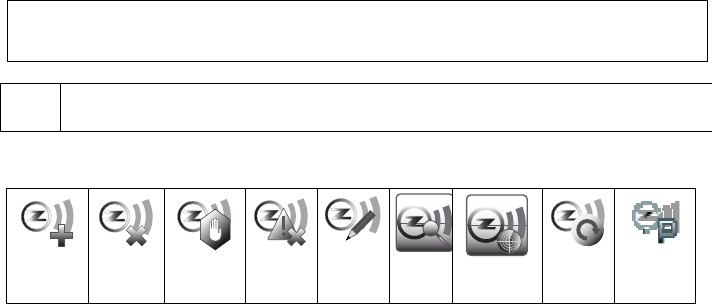
– 11 –
Automation and Using Z-Wave Devices (Automation menu)
The VISTA Automation Module lets you control installed Z-Wave devices such as
lights, thermostats, door locks, etc. To use Z-Wave devices, they first must be added
(“included”) to the system. Follow the instructions below to Include Z-Wave enabled
devices into a home control network using the VAM and follow the instructions in the
Z-Wave device User Guide for your specific device.
EXISTING NETWORK NOTE: Z-Wave products from other manufacturers can be included
(added) into the VAM network. Z-Wave devices that are always powered can serve as
repeaters regardless of manufacturer.
UL
•
Automation functionality is supplementary only and has not been evaluated by UL.
•
Z-Wave applications have not been evaluated by UL.
Z-Wave Device Management Buttons
Manually Operating Devices
Devices can be programmed to operate automatically based on scenes you define (refer
to the Creating Scenes section). Alternatively, you can manually control a device using
the Z-Wave Management screen (Automation > Z-Wave Setup).
Adding (Include/Add) Z-Wave Devices
Each device must be installed according to the manufacturer’s instructions. Before
starting, make sure light modules are on, door locks are assembled and have their
batteries installed, and thermostats are installed and operating.
WARNING: Automation is intended for lifestyle convenience. Do not use automation
for life safety and property protection.
1. Go to the Z-Wave Device Management screen (Automation > Z-Wave Setup).
2. Click the Z-Wave Include/ Add button.
3. At the Z-Wave device, press the appropriate Function button depending on the
type of device being added. Refer to the Device sections that follow.
Add
Device
Remove
Device
Abort
Operation
Remove
Failed
Edit
Name
Search
Device
Scan
Factory
Default
Primary
Ctrl
PLEASE GO TO THE BOTTOM OF
PAGE 35 FOR FCC / IC AGENCY
STATEMENTS.

– 12 –
Light, Switch or Outlet Module
Be sure the power switch on the device module is ON. Press the Function
Key on the device.
NOTE: Z-Wave light modules may vary; follow the instructions in the Users
Guide for your specific device to include properly into the Z-Wave network.
• If a dimmer module (multi-level switch) was included, an On/Off button
and a slide bar (to control dimmer) are displayed.
• If an on/off light/appliance module (binary switch) was included, an On/Off
button (to control the device) is displayed.
The screen displays a series of messages:
“Start add device. Please press function key on device”
“Adding Slave Unit”
“Device added successfully”
Door Locks
Assemble the Z-Wave door lock.
IMPORTANT: Be sure the door lock orientation/handedness is correct before
Including into the system.
Door lock devices may vary; follow the instructions in the User Guide for your
specific door lock to include properly and to program a new user code. Refer to
the Door Lock’s Instruction Guide and connect necessary cables, then install
batteries.
NOTES:
• Program the user code in the control panel prior to programming that user
code into the door lock. User Codes must be 4-digits.
• If software is upgraded on the VAM, re-include the door lock and re-set the
user code in the door lock
Include a door lock device into VAM as follows:
a) Press the *Function Key on the door lock.
b) Program the selected user code assigned in the panel; refer to Door Lock
User Guide.
The screen displays a series of messages:
“Please press *function key on device”
“Adding Slave Unit:
“Adding to Security Network”
UL
Access control functionality has not been evaluated by UL and may
not be used in UL Listed applications.
PLEASE GO TO THE BOTTOM OF
PAGE 35 FOR FCC / IC AGENCY
STATEMENTS.
– 13 –
Honeywell Thermostat
Install Honeywell Thermostat according to the manufacturer’s instructions.
The device should be mounted in the final location and tested before adding it
to the system.
NOTES:
• Honeywell is not responsible for property damages due to improper setting
of the thermostat modes.
• If installing another brand of thermostat, follow the instructions in the
User Guide for that specific thermostat to include properly into the Z-Wave
network.
• If not using a Honeywell thermostat, enrollment procedure may vary. Refer
to the thermostat instructions for enrollment procedure.
1. At the Z-Wave thermostat:
a) Select Thermostat; set Time/Date.
b) Follow the instructions in the thermostat Installation Guide for “Z-Wave
enrollment”.
c) To complete inclusion, Click Done.
d) Click Exit to return to normal operation.
2. At the VAM:
a) To verify activation, Click the Back button and wait 30 seconds. Click
the Refresh button; the new device is displayed.
The screen displays a series of messages:
“Please press function key on device”
“Adding Controller Unit”
“Adding Slave Unit”
“Device added successfully”
Editing Z-Wave Device Names
To edit a device name, do the following:
1. Go to the Z-Wave Management screen (Automation > Z-Wave Setup).
2. Highlight the device name and click the Z-Wave Edit button.
3. Enter a new name.
d) Click OK.
Abort a Z-Wave Action
If you inadvertently make a wrong selection, (add, delete, or remove failed device)
click the Abort button to stop the process.
PLEASE GO TO THE BOTTOM OF
PAGE 35 FOR FCC / IC AGENCY
STATEMENTS.

– 14 –
Removing All Z-Wave Devices
To remove all Z-Wave devices, do the following:
1. Click Automation > Z-Wave Setup to display the “Z-Wave Device Management”
screen.
2. Click Z-Wave Default to delete all devices from the controller.
3. Select Yes or No. The following message is displayed:
This Z-WAVE controller is about to be factory defaulted and will lose all devices in
the enrolled list.
All Z-WAVE devices must be re-enrolled after this reset.
Yes or No
Z-Wave Notes
1. Motorized door lock bolts physically lock and unlock when activated, but if the door
lock installed is a non-motorized type, activation allows the door to be manually
unlocked without a key. See “Compatible Devices” section for further information.
2. Some thermostats do not update temperature status automatically (i.e., Wayne
Dalton).
3. When using a Kwikset Smartcode electronic deadbolt door lock (in a Scene that is
programmed to trigger when unlocked) the Scene does not trigger if using a key;
enter a user code.
Z-Wave Troubleshooting
PROBLEM
SOLUTION
Cannot add new
device.
Make sure the Z-Wave device is within range of the VAM. You
may need to move the device closer to the VAM. Refer to the
Z-Wave device Instruction Guide for proper range.
Device is within
proper range but
still is not
included.
1. Go to the Z-Wave Device Management” screen.
(Automation > Z-Wave Setup).
If the device does not appear on the screen, click
the Z-Wave Exclude/Delete button.
2. At the Z-Wave device, Click the Function Key.
The screen will display a message “Device
Removed”.
3. Include the device again.
Highlighted device
will not delete.
When deleting a device, if the selected device
remains on the screen, highlight the device name
and click the Removed Failed Device button.
PLEASE GO TO THE BOTTOM OF
PAGE 35 FOR FCC / IC AGENCY
STATEMENTS.
– 15 –
Using VAM as a Secondary Controller
VAM can be used as a secondary controller when connected to another Z-Wave network.
1. Remove any Z-Wave devices previously included in VAM.
Click Automation > Z-Wave Setup to display the Z–Wave Management screen, then
click Z-Wave Reset and select Yes.
2. Press the Z-Wave Primary button to switch VAM to secondary controller. The Z-Wave
Primary icon changes to Z-Wave Secondary accordingly.
3. Start the inclusion process at the other network’s primary controller (see
controller’s manual), then click the Add Device button in VAM’s Z-Wave Management
screen to add (include) VAM to the controller. To remove (exclude) VAM from the
primary controller, start the exclusion process at the other network’s primary controller,
then click the Remove Device button in VAM.
PLEASE GO TO THE BOTTOM OF
PAGE 35 FOR FCC / IC AGENCY
STATEMENTS.

– 16 –
Creating Scenes
The system can automatically activate various devices when certain events occur. The
programming of these triggers and actions is called Scenes. Up to 10 scenes can be
defined.
A scene consists of a trigger, an optional condition, and up to three actions.
Definitions of Trigger, Condition, and Action
Trigger
Defines the event that triggers the programmed action(s).
Triggers include the following categories:
Time Choose the time option the action should begin:
Repeated
(choose the days of the week)
Once
(enter the date)
Sunrise/Sunset
(region must be set)
By Clock
(set the time the scene should begin)
Security Choose the security mode upon which the action begins:
Disarm
(action starts when the system is disarmed)
Away (
action starts when the system is armed Away mode)
Stay
(action starts when the system is armed Stay mode)
Night
(action starts when the system is armed Night mode)
Away Secured
(action starts after exit delay has expired)
Alarm
(action starts if an alarm occurs)
Enter User Code:
Thermostat Choose the temperature at which the action begins:
Above
(set the temperature)
Below
(set the temperature)
Door Choose the door status at which the action begins:
Locked
(action starts when the door is locked)
Unlocked
(action starts when the door is unlocked)
Code Unlocked
(action starts when door is unlocked by code)
Zones Choose the zone condition to cause the action to begin:
Restore
(for trigger only; not for use with conditions)
Alarm
(upon an alarm from a specific zone or zones)
Fault
(upon a fault from a specific zone or zones)
Condition
Defines an optional event that adds a condition to the trigger. Conditions
include the same categories as triggers, however, conditions cannot be
set with the same category as the trigger. (ex., if setting a trigger event
for security, you cannot use a security event as a condition).
PLEASE GO TO THE BOTTOM OF
PAGE 35 FOR FCC / IC AGENCY
STATEMENTS.
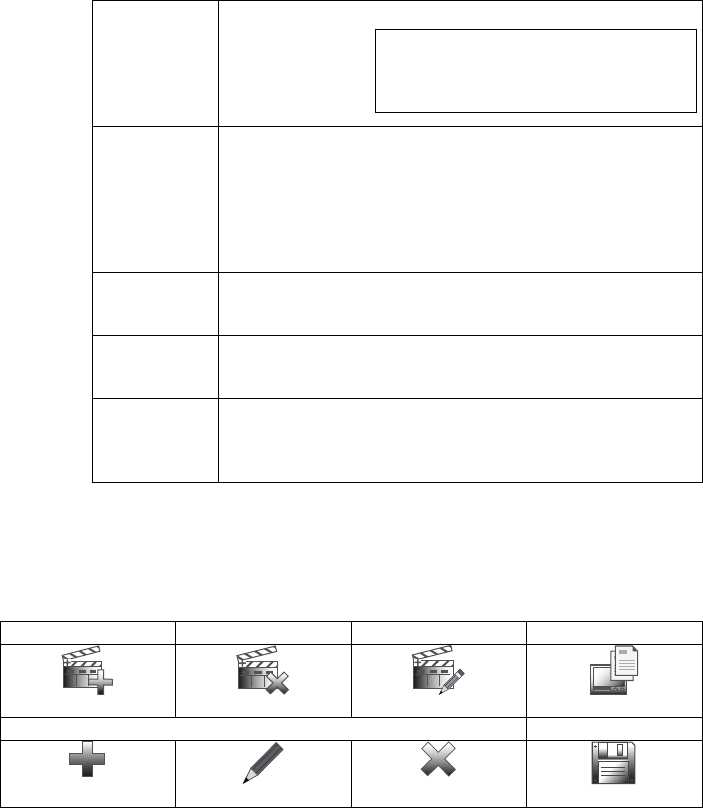
– 17 –
Action
Defines the desired device action(s) when the trigger event occurs.
Actions include the following categories:
Security Choose the security mode to occur upon the trigger event:
Disarm
Away
Stay
Night
Enter User Code
NOTE: A valid user code is required for the
system to perform any of the actions listed. Enter
the code at the prompt. If the user code is later
deleted from the security system, you will need to
reenter a valid code at this screen.
Thermostat Choose the thermostat action to occur upon the trigger
event:
Off
Heat
Cool
Set point
Set energy mode (normal/savings)
Light Choose the light option to occur upon the trigger event:
On/Off
On for Time
Door Choose the door status to occur upon the trigger event:
Unlocks
Locks
E-Mail If an email message is to be sent upon the trigger event,
choose the recipient and enter a custom message.
The Confgure E-Mail ID’s button lets you create email
accounts if not previously set up via the Email Setup menu.
Example: You want the lights to turn on when you arrive back home and disarm the
system, but only at night.
Trigger: “when the system disarms:” Set the Trigger to Security: System Disarm
Condition: “only at night:” Set the TIME condition (enter the Start Time and Duration)
Action: “Turn the lights ON:” Set the Action to LIGHT: ON.
Scene
Button
s
ADD
DELETE
EDIT
LOG
Condition/Trigger/Action
Button
s
Add
Edit
Delete
Save
PLEASE GO TO THE BOTTOM OF
PAGE 35 FOR FCC / IC AGENCY
STATEMENTS.

– 18 –
Steps To Create a Scene
1. Go to the Scene Setup menu (Automation > Scene Setup).
2. Click Add.
3. Click Scene Name; enter a name and click OK.
4. Assign the desired “Condition,” “Trigger,” and “Action” for this scene. For each
category, use the appropriate device drop-down menu to choose the specific
device(s).
5. After each selection click Save.
Creating Groups & Rooms
Groups and rooms are defined collections of Z-Wave devices that can be used in scenes.
A group is a defined collection of the same type of Z-Wave devices (only light modules,
or only door locks, etc.). When used in a scene and the scene activates, all devices
assigned to that group activate.
A room is a defined collection of different types of Z-Wave devices (light modules, door
locks, thermostat, etc.). When used in a scene and the scene activates, all devices
assigned to that “room” activate. (The Room feature might not yet be available.)
Group Setup Buttons
Delete
Edit
Add
Save
Steps to Create a Group
1. Click Automation > Group Setup.
2. Click the Add button and enter a group name > GO.
3. Choose the Group Type (Binary Light, Door Lock, Thermostat) from the drop-down
list.
4. Choose the device(s) to be part of this group from the drop-down list.
Use the edit button to change the name of a group if desired.
5. Click Save.
Steps to Create a Room
1. Click Automation > Room Setup.
2. Click the Add button and enter a room name > GO.
3. Select the device(s) to be part of this room from the drop-down list.
4. Click Save.
PLEASE GO TO THE BOTTOM OF
PAGE 35 FOR FCC / IC AGENCY
STATEMENTS.

– 19 –
Using the Security System (Security Menu)
You can control your security system using VAM’s Security menu, including arming,
disarming, and bypassing zones.
Refer to the control panel’s user guide for details on specific security system functions.
User Codes
Each user was be assigned a name and 4-digit user code by your installer at the time
of installation. To add additional user codes, refer to your security system user guide.
Introduction to Arming and Disarming the System
You can arm your system in one of three arming modes: Away, Stay, and Night. The
following table lists the three different arming modes and the results of each.
MODE
NOTES
AWAY
Use when no one is staying on the premises. When armed in AWAY
mode, the system sounds an alarm if a protected door or window is
opened, or if any movement is detected inside the premises.
IMPORTANT: On certain VISTA-Turbo systems, “Away Auto
Stay” mode is shown as “Away” mode (with all zones monitored).
However, some interior zones may not be armed.
ST
AY
Use when you are staying home, but might expect someone to use
the entrance door later.
When armed in STAY mode, the system sounds an alarm if a
protected door or window is opened, but you may otherwise move
freely throughout the premises.
NIGHT
Use when you are staying home and do not expect anyone to use
the entrance door. Your installer may have configured NIGHT
Mode differently; have the installer describe the actual settings of
this mode.
Steps to Arm the System
Arming the system in any mode is performed in the same way, as described below.
NOTE: Close all perimeter windows and doors before arming and make sure the
system is “Ready to Arm.” Or, bypass zones you want left open to make the system
Ready to Arm.
1. From the “Home” screen, select SECURITY.
2. Choose the desired arming mode. You may be prompted to enter your user code.
3. The screen displays the exit delay countdown. When exit delay expires, the screen
displays "Armed."
PLEASE GO TO THE BOTTOM OF
PAGE 35 FOR FCC / IC AGENCY
STATEMENTS.

– 20 –
Arming Multiple Partitions
NOTE: Some systems may not have multiple partitions and the “Arm Multi-
Partitions” option may not be available. In addition, your code must be authorized to
arm multiple partitions.
1. From the “Home” screen, select Security and then select Arm Multi-Partition.
2. Choose the desired arming mode.
3. Enter the User Code authorized to access other partition(s).
4. Select the partition from the list on the screen, and press OK.
5. If desired, select ALL to arm all partitions listed.
NOTES:
• A user may have access to some or all of the available partitions.
• If the user code is accepted, the system displays the partitions that the user has
access to.
Steps to Disarm the System
IMPORTANT: If you return to your home or business and the main burglary
sounder is on, DO NOT enter the premises, but call the police from a nearby safe
location. If you return to your home or business after an alarm has occurred and
the main sounder has shut itself off, the keypad beeps rapidly upon entering,
indicating that an alarm has occurred during your absence. LEAVE
IMMEDIATELY and CONTACT THE POLICE from a nearby safe location.
If armed in AWAY mode:
1. When you enter the premises, the Entry Delay Active message appears.
2. Enter your 4-digit user code. The system disarms.
If armed in STAY or NIGHT mode:
1. Select the Disarm button.
2. Enter your 4-digit user code. The system disarms.
Steps to Disarm Multi-Partitions
1. Select Security.
2. Choose Arm Multi-Partition.
3. Click the Disarm button.
4. Enter your 4-digit user code.
5. Highlight the partition(s) to disarm and press OK, or press ALL to disarm all
partitions.
PLEASE GO TO THE BOTTOM OF
PAGE 35 FOR FCC / IC AGENCY
STATEMENTS.
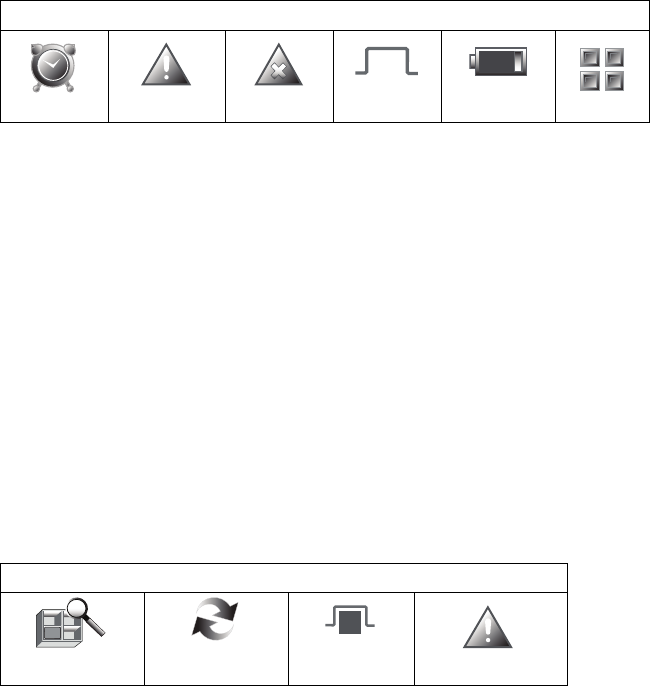
– 21 –
How to Display Faults (Zones)
If the system shows the “Not Ready Fault” message, it means a zone or zones are open
(faulted). Zones must be closed or bypassed before you can arm the system.
Distressed Zones Buttons
Alarm
Troubles
Faults
Bypass
Zones
Low Battery
All
To display the open zone(s), do the following:
1. Select Security, then click the SHOW ZONES button.
2. Click the DISTRESSED ZONES button, and then click the FAULTS button.
A listing of faulted and/or bypassed zones is displayed. As applicable, take
corrective action such as closing a window or door to correct the fault.
3. If the fault cannot be corrected, you may choose to bypass the zone. by selecting
the zone then click the BYPASS SELECTED button. Refer to the How to Bypass
Zones section for more details on bypassing zones.
How to Bypass Zones
The Bypass function is used when you want to arm your system with one or more
zones left open. Bypassed zones are unprotected and do not cause an alarm when
violated while your system is armed.
• Some systems do not allow you to bypass fire, carbon monoxide or emergency zones.
On certain fire control systems, a specified user may be allowed to bypass fire,
carbon monoxide and system zones if the user was enabled by your system installer.
• Limits apply as to how many zones can be bypassed at one time. See your installer
for these limits.
Show Zones Buttons
Show Zones
Refresh Data
Bypass
Selected
Distressed Zones
1. Select SECURITY.
2. Click the SHOW ZONES button.
3. Choose the zone(s) to be bypassed and click the BYPASS SELECTED button.
4. Enter your 4-digit user code.
PLEASE GO TO THE BOTTOM OF
PAGE 35 FOR FCC / IC AGENCY
STATEMENTS.

– 22 –
5. Click the BACK button to return to the “Arming” screen, and then arm the system
in the desired arming mode.
How to Clear Bypassed Zones
A bypassed zone is automatically unbypassed when you disarm the system. If a zone
is bypassed, you can manually remove the bypass as follows:
1. Click the SHOW ZONES button.
2. Click the CLEAR BYPASSES button.
3. Enter your 4-digit user code. The system should now be Ready to Arm.
NOTE: If the system is armed and you unbypass a zone, it disarms the system. If
zones are still faulted (not ready) the system will indicate the status as “Not Ready
Fault”.
Console Emulation Mode
Console Emulation Mode allows you to use the web browser as a keypad interface just
as you would a regular system keypad. All commands shown in Console Emulation
mode can also be performed from a standard alpha keypad.
NOTES:
• It is recommended that you do not use Console Emulation Mode to enter GOTO
commands, because unsatisfactory operation may result.
• Two button panics (1 & *, 3 & #, and * & #) do not function in the Console
Emulation Mode. The A, B, C, and D buttons do function if programmed as panic
keys. Check with your system installer for details.
Console
Mode
How to Enter Console Emulation Mode
To start Console Emulation Mode, do the following:
1. From the Home screen, press the SECURITY button.
2. Press the CONSOLE MODE button.
3. Perform functions as you would from a standard alpha keypad.
PLEASE GO TO THE BOTTOM OF
PAGE 35 FOR FCC / IC AGENCY
STATEMENTS.

– 23 –
Using Total Connect with VAM (Remote Services)
The VISTA Automation Module supports Remote Services for controlling Z-Wave
devices and scenes remotely from an associated Total Connect account. Ask your
installer if a Total Connect account has been set up for you.
The following describes the related features:
• VAM can be controlled from a smart phone, i-Pad
TM
, Android
TM
Tablet,
Blackberry
®
or PC using Total Connect and includes webpage support for iOS6 and
Google-TV
• Automation scenes can be created in both Total Connect and VAM
(Scenes created in Total Connect can be edited only via Total Connect)
• Scenes created in Total Connect can be viewed from either Total Connect or directly
from VAM using the Remote selection on the VAM scenes page
• Scenes created in VAM cannot be viewed from Total Connect.
The following table summarizes the relationships between Total Connect scenes
and VAM scenes:
Controlling
Device
Scenes created in Total
Connect Scenes created in VAM
View
Edit Scenes
View
Edit Scenes
Total Connect yes yes no no
VAM yes no yes yes
NOTE: For troubleshooting purposes, Total Connect server information (including IP
addresses) can be viewed on the Total Connect Server Setup screen by
clicking the TC Server button (see next page).
Controlling Automation (Z-Wave) Devices Remotely
Use Total Connect to control Z-Wave devices: lamp modules (binary switch), dimmer
modules (multilevel switch), thermostats, etc., from a smart phone, i-Pad
TM
,
Android
TM
Tablet, Blackberry
®
or PC.
1. Access the Total Connect account and navigate to the Automation section of the
dashboard.
2. Select a displayed device and click the desired action. Refer to the Total
Connect online help guide for further details on controlling Z-Wave devices
.
PLEASE GO TO THE BOTTOM OF
PAGE 35 FOR FCC / IC AGENCY
STATEMENTS.
– 24 –
Creating Scenes in Total Connect
Use the Automation section of the dashboard in Total Connect to create up to 20
scenes. Refer to the Total Connect Online Help Guide for further details and device
limitations for creating an automation scene.
1. Access the Total Connect account and navigate to the Automation module. Click
Create New. Enter a name for the scene, select an button, and then click on the
check boxes for the various device actions desired for that scene. Set the
thermostat, if used, to the desired mode and/or temperature for that scene. Click
Save when done.
NOTE: Scenes created in Total Connect can be edited only from Total Connect.
2. After scenes have been created, follow the Total Connect prompts to synchronize
the data with VAM. Syncing is required before scenes created in Total Connect will
display in VAM’s menus.
Viewing and Controlling Total Connect Scenes from VAM
Use the Scenes button to display and control scenes that have been created in Total
Connect.
1. From the Main menu, Click the Automation and Scene Setup buttons, then Click
the Remote button. The screen displays a list of scenes created in Total Connect.
NOTE: The Local button allows you to view a list of scenes created in VAM.
2. To control a Remote scene, select the desired scene, then click the appropriate
action (ex. Run).
Enabling Devices for Total Connect
1. From the Main menu, click Setup > System > TC Server.
2. Click the TC Enable button; the “Z-Wave Device Management for Total Connect”
screen is displayed.
3. Select the device that you want to enable/disable in Total Connect.
NOTE: Devices are defaulted to Enable.
4. Click Save when done.
5. After devices have been enabled for Total Connect, follow the Total Connect
prompts to synchronize the data with VAM. Syncing is required before the enabled
devices will display in Total Connect.
NOTES:
1. Device IDs for Z-Wave devices could be different on VAM and Total Connect web
pages.
2. On Total Connect, the maximum number of supported devices is 40 switches, 3
thermostats, and 4 door locks.
PLEASE GO TO THE BOTTOM OF
PAGE 35 FOR FCC / IC AGENCY
STATEMENTS.
– 25 –
Total Connect Server Screen for Troubleshooting
The TC Server screen displays the current server information and Z-Wave device
status. This information is typically used for IP connection troubleshooting purposes
in collaboration with a service technician.
To access Total Connect Server Information and Z-Wave Status from the VAM, do the
following:
1. From the Main menu, click the Setup button and then click System; enter the
installer code (if required). Click the TC SERVER button.
2. The Total Connect Server Setup screen is displayed with the current Server
information and Z-Wave Status (enabled/disabled).
NOTE: These fields are for reference only and cannot be edited.
3. Click the Connect button to test the connection to the AlarmNet servers.
PLEASE GO TO THE BOTTOM OF
PAGE 35 FOR FCC / IC AGENCY
STATEMENTS.

– 26 –
System Setup
Use the setup menus to program email notifications, create a remote access login, set
the time and date, and connect VAM to a new wireless router.
Email Setup
Email setup allows you to receive email notifications when one or more system events
occur. Your installer may have already set up email notifications for you.
NOTE: Email notification requires that you have an active email address.
• An SMTP account needs to be assigned to establish the email server domain (i.e.,
the “from” address).
• There are four programmable sets of events (labeled “Event 1 – Event 4”).
• Each event 1-4 can send notifications to up to four email addresses (notification
messages are pre-defined by the system based on the event).
• For each event 1-4, choose the conditions that will trigger notification:
Event Type
Conditions that Trigger Notification
Security Disarm, Arm Away, Arm Stay
Zones Alarms, Troubles, Restores
Thermostat Temp Above or Temp Below an assigned temperature
Door Lock Unlocked or Locked
1. Click Setup then select Email.
2. Click the User SMTP button to assign the user’s email server information. This
establishes the email server domain (the “from” address).
a. Select the email server name (email provider). Choose from GMAIL, OUTLOOK,
YAHOO, or Add New.
b. Enter the email ID (user name) and password for the chosen email server.
c. The Email Server and SMTP port number fields are automatically filled unless
“Add new” was selected.
If Add new email server was selected, enter the appropriate SMTP and port
number information (see your email provider for details).
d. Click Save.
3. Click Event 1 to define the event types and conditions that will trigger notifications
to the chosen email address(es).
4. Enter up to four email address(es) to which Event 1 will send notifications.
5. Click Save.
6. Repeat steps 3 -5 for Events 2-4 if desired.
PLEASE GO TO THE BOTTOM OF
PAGE 35 FOR FCC / IC AGENCY
STATEMENTS.
– 27 –
Remote Access Log In Setup (Account Setup)
Remote access lets the user access VAM’s menus directly via the Internet when away
from home. The home router must first be configured for port forwarding. Refer to the
router’s instructions for details on port forwarding.
You can assign up to five user logins.
To set up a remote access log in, do the following:
1. Click Setup > Account.
2. Enter the desired user name and password.
Passwords must be a minimum of 8 alphanumeric characters, and must include at
least one uppercase letter, one lowercase letter, and one number.
3. Click Save. The new user is displayed.
To clear a user’s login, click the CLEAR button.
To access VAM remotely, use a web browser and VAM’s network IP address to go to
the login screen. Enter the assigned user name and password to open the main menu.
NOTE: Remote login is blocked after 3 failed attempts. To reset remote access, you
must first connect to VAM locally via the home router, then re-enable remote access.
Click Setup > Account, then click the appropriate Enable button and click Save.
Time and Date Setup
VAM can get the time from the control panel, or you can set the time manually.
Set the time and date from the Set Time & Date screen.
• When the time is set it is stored in the keypad and sent to the control panel when
you Click the Apply button and answer Yes to the following prompt. Additionally,
when using the keypad with a residential panel, the panel downloads its time into
the keypad once an hour after the clock is set.
• If Get Time is clicked, the keypad downloads the time and date from the control
panel and exits the Set Time & Date screen.
Steps to Set the Time and Date
1. Click Setup > System > Time/Date Setup.
2. Select the Month, Year, Hour, and Minutes using the drop-down menus for each.
3. Select AM or PM (selection toggles by clicking)
4. Select the desired date format using the MMDDYY drop-down menu. Choose 12-
hour (select the 12 Hour checkbox) or 24-hour format (uncheck the checkbox).
5. If Daylight Saving Time is used in the installation time zone, click DST and set the
appropriate start and end DST month, weekend and hour. VAM will automatically
adjust the time when Daylight Saving Time starts and ends.
6. Click Apply to save the settings.
7. A choice (checkmark = Yes; X = No) to copy the time to the control panel may
appear. Choosing “yes” sets the control panel to the time entered in VAM.
PLEASE GO TO THE BOTTOM OF
PAGE 35 FOR FCC / IC AGENCY
STATEMENTS.
– 28 –
Changing the Home Router (Wi-Fi Setup)
To set up the WiFi network for VAM, you will need the following:
• WiFi enabled computer device
(Tablet PC, laptop, Smartphone, etc.)
• VAM SSID and WPA2 password (located on the VAM’s label)
• VAM default IP address: 192.168.2.1
• Home router SSID and WPA2 password (typically located on the home router’s
label); home router must use WPA2 encryption and have a password (key) assigned.
1. Connect a WiFi computer device to VAM.
a. Power up the VAM and reset it to factory settings. Using the Wi-Fi and Factory
Default button, press and hold down for more than 5 seconds to reset the WiFi
network settings to the original default settings.
b. Connect the computer to the VAM using the computer’s WiFi settings menu
(VAM is a wireless access point).
Enter the VAM SSID: VAM_xxxx
NOTE: xxxx = the last 4 digits of the MAC address
SSID is case-sensitive
Enter the Key (found on the VAM label “WPA2 pw” line)
2. Access VAM’s home screen.
a. Open a web browser on the computer device.
b. Go to VAM’s default IP address: 192.168.2.1
3. Connect the VAM to the home router.
a. From the main menu, click the Set Home Router button.
b. Enter the home router SSID and security key.
(SSID and security key are case-sensitive)
c. Click Connect. A countdown begins and displays “Trying to connect to the
Router: xxxx, please stay in this page and wait…”
d. VAM can take about 2 minutes to connect to the home router. During this time,
VAM reboots twice and a new network IP address is assigned to the VAM.
When done, VAM automatically connects to the home router.
4. Retrieve and save VAM’s network IP address.
a. Leave the browser page open (minimize, but don’t close, if needed).
b. Reconnect the computer to the VAM using the computer’s Wi-Fi settings menu.
c. When connected to the VAM, return to the open browser page and click the
Show IP Info link.
d. The home router’s SSID and VAM’s new IP address is shown. Note the IP
address for future reference.
e. Keep the Fixed IP option unchecked and click the Save button (Fixed IP is
PLEASE GO TO THE BOTTOM OF
PAGE 35 FOR FCC / IC AGENCY
STATEMENTS.

– 29 –
intended for network administrators).
f. At the “…do you want to continue?” prompt, click the checkmark (yes). VAM
reboots, then automatically connects to the home router and opens the main
menu.
5. Complete the network setup and bookmark VAM’s URL.
a. VAM should now be connected to the home network router.
b. Bookmark the URL displayed in the browser’s address bar for easy access to
VAM later.
c. To access VAM’s main menu at a later session, simply go to the bookmarked
address, or go to the following URL:
http://VAM.tuxconnect.info or
http://vam.mylanconnect.com (future use)
Options and ECP Address (for Installer use only)
IMPORTANT: The Options menu is intended for the installer only and the
settings should not be changed by the user. Changing these settings can disconnect
communication between VAM and the control panel and cause system errors.
PLEASE GO TO THE BOTTOM OF
PAGE 35 FOR FCC / IC AGENCY
STATEMENTS.

– 30 –
Software Upgrades
Software upgrades may be available for this product. To ensure you have the latest
version, check the version in your system (see System Information below). Software
upgrades can be done manually, or you can set VAM to notify you automatically that
an upgrade is ready.
System Information
To view the current software version installed on your system, do the following:
Click the Setup button then click the System Info button.
Manual Software Upgrades
Go to the Toolkit site located at: http://www.tuxedotouchtoolkit.com/index.html to
download the latest software to an SD card.
1. Copy the software upgrade file to the SD card.
2. Insert the SD card then reset the VAM (use a paper clip to depress the Reset
button then release). The yellow Operation LED flashes during the upgrade
process.
3. The LEDs show solid green and blue indicating the default/upgrade process is
done.
Automatic Software Updates
To receive automatic remote updates, select the Enable Remote Upgrade checkbox on
the system information screen and install an SD card.
1.
Click
Setup > System Info,
then select the
Enable Remote Upgrade checkbox.
2. Make sure a blank SD card is installed
(minimum 200 MB of available space is
required.
3. When updates are available, the system will
automatically update the system.
INSERT
SD CARD
PLEASE GO TO THE BOTTOM OF
PAGE 35 FOR FCC / IC AGENCY
STATEMENTS.

– 31 –
Compatible Z-Wave Devices
Z-Wave devices may vary; follow the instructions in the Users Guide for your specific
device when adding and deleting devices into the Z-Wave network. Refer to the table
below for some of the compatible devices.
Door Locks
Yale Real Living Push Button Lever Lock
Yale Real Living Touchscreen Lever Lock
Yale Real Living Push Button Deadbolt Lock
Yale Real Living Touchscreen Deadbolt Lock
Schalge Link Deadbolt Lock
Schlage Link Lever Lock
Kwikset Smartcode Lever lock
Kwikset Smartcode Deadbolt Lock
Thermostats
Honeywell ECC
Wayne Dalton Zwave thermostat
Trane Zwave Thermostat
Appliance
HomeManageable Appliance Module
Wayne Dalton Small Appliance Module
GE Wireless Lighting Control Plug In Appliance Module
Lights
Leviton/ViziaRF+ Switches
Leviton/ViziaRF+ Dimmers
Leviton/ViziaRF+ Plug in Modules
GE Wireless Lighting Control Dimmers
GE Wireless Lighting Control Switches
GE Wireless Lighting Control Plug in Lamp Modules
Not all Z-wave devices have been tested and some features may produce unpredictable
results.
PLEASE GO TO THE BOTTOM OF
PAGE 35 FOR FCC / IC AGENCY
STATEMENTS.

– 32 –
NOTES
Wireless Range
This device complies with the Z-Wave® standard of open-air, line of sight
transmission distances of 100 feet. Actual performance in a home depends on the
number of walls between the controller and the destination device, the type of
construction and the number of Z-Wave enabled devices installed in the control
network.
Please Note:
Z-Wave home control networks are designed to work properly
alongside wireless security sensors, Wi-Fi, Bluetooth and other wireless devices. Some
900 MHz wireless devices such as baby cams, wireless video devices and older cordless
phones may cause interference and limit Z-Wave functionality.
Things to consider regarding RF range:
- Each wall or obstacle (such as refrigerator, big screen TV, etc.) between the
remote and the destination device will reduce the maximum range of 100 feet
by approximately 25-30%.
- Brick, tile or concrete walls block more of the RF signal than walls made of
wooden studs and drywall.
- Wall mounted Z-Wave devices installed in metal junction boxes will suffer a
significant loss of range (approximately 20%) since the metal box blocks a
large part of the RF signal.
-
WARNING: NOT FOR USE WITH MEDICAL OR LIFE SUPPORT EQUIPMENT!
Z-Wave enabled devices should never be used to supply power to, or control the On/Off
status or medical and /or life support equipment.
Controlling Devices:
The features and functions that can be controlled vary by manufacturer and you will
need to review the user manual that was provided to determine capabilities of each
device.
Z-Wave devices are identified by the Z-Wave logo and can be
purchased from your local retailer.
Z-Wave
®
is a registered trademark Sigma Designs, Inc.
and/or its subsidiaries.
PLEASE GO TO THE BOTTOM OF
PAGE 35 FOR FCC / IC AGENCY
STATEMENTS.
– 33 –
– NOTES –
PLEASE GO TO THE BOTTOM OF
PAGE 35 FOR FCC / IC AGENCY
STATEMENTS.
– 34 –
– NOTES –
PLEASE GO TO THE BOTTOM OF
PAGE 35 FOR FCC / IC AGENCY
STATEMENTS.

– 35 –
FEDERAL COMMUNICATIONS COMMISSION (FCC) AND
INDUSTRY CANADA (IC) STATEMENTS
The user shall not make any changes or modifications to the equipment unless authorized by the
Installation Instructions or User's Manual. Unauthorized changes or modifications could void the
user's authority to operate the equipment.
FCC CLASS B STATEMENT
This equipment has been tested to FCC requirements and has been found acceptable for use.
The FCC requires the following statement for your information:
This equipment generates and uses radio frequency energy and if not installed and used
properly, that is, in strict accordance with the manufacturer's instructions, may cause
interference to radio and television reception. It has been type tested and found to comply with
the limits for a Class B computing device in accordance with the specifications in Part 15 of FCC
Rules, which are designed to provide reasonable protection against such interference in a
residential installation. However, there is no guarantee that interference will not occur in a
particular installation. If this equipment does cause interference to radio or television reception,
which can be determined by turning the equipment off and on, the user is encouraged to try to
correct the interference by one or more of the following measures:
• If using an indoor antenna, have a quality outdoor antenna installed.
• Reorient the receiving antenna until interference is reduced or eliminated.
• Move the radio or television receiver away from the receiver/control.
• Move the antenna leads away from any wire runs to the receiver/control.
• Plug the receiver/control into a different outlet so that it and the radio or television receiver are
on different branch circuits.
• Consult the dealer or an experienced radio/TV technician for help.
INDUSTRY CANADA CLASS B STATEMENT
This Class B digital apparatus complies with Canadian ICES-003.
Cet appareil numérique de la classe B est conforme à la norme NMB-003 du Canada.
FCC / IC STATEMENT
This device complies with Part 15 of the FCC Rules, and RSS 210 of IC. Operation is subject to
the following two conditions: (1) This device may not cause harmful interference (2) This device
must accept any interference received, including interference that may cause undesired
operation.
Cet appareil est conforme à la partie 15 des règles de la FCC & de RSS 210 des Industries
Canada. Son fonctionnement est soumis aux conditions suivantes: (1) Cet appareil ne doit pas
causer d' interférences nuisibles. (2) Cet appareil doit accepter toute interférence reçue y
compris les interférences causant une réception indésirable.
RF EXPOSURE
Warning -- The VAM must be installed to provide a separation distance of at
least 7.8 in. (20 cm) from all persons and must not be co-located or operating in
conjunction with any other antenna or transmitter except in accordance with
FCC multi-transmitter product procedures.
Mise en Garde -- Exposition aux Frequences Radio: L'antenne (s) utilisée pour
cet émetteur doit être installée à une distance de séparation d'au moins 7,8
pouces (20 cm) de toutes les personnes.

TWO YEAR LIMITED WARRANTY
Honeywell International Inc., acting through its Security & Communications business (“Seller”), 2 Corporate Center
Drive, Melville, New York 11747 warrants its products to be free from defects in materials and workmanship under
normal use and service, normal wear and tear excepted, for 24 months from the manufacture date code; provided,
however, that in the event the Buyer presents a proper invoice relating to the purchased product and such invoice
bears a date later than the manufacture date, then Seller may at its discretion, reflect the warranty period as
commencing at invoice date. Except as required by law, this Limited Warranty is only made to Buyer and may not be
transferred to any third party. During the applicable warranty period, Seller will repair or replace, at its sole option
and as the exclusive remedy hereunder, free of charge, any defective products.
Seller shall have no obligation under this Limited Warranty or otherwise if the product:
(i) is improperly installed, applied or maintained;
(ii) installed outside of stated operating parameters, altered or improperly serviced or repaired by anyone other than
the Seller/Seller’s Authorized Service/Repair Center;
(iii) damage is caused by outside natural occurrences, such as lightning, power surges, fire, floods, acts of nature, or
the like; or
(iv) defects result from unauthorized modification, misuse, vandalism, alterations of serial numbers, other causes
unrelated to defective materials or workmanship, or failures related to batteries of any type used in connection
with the products sold hereunder.
Exceptions to Warranty With Respect to Honeywell Products listed below:
Hardwire Contacts and PIRs – Seller warrants parts for hardwire contacts and PIRs in accordance with the terms of
the above limited warranty for a period of five (5) years from the manufacture date code.
EXCLUSION OF WARRANTIES, LIMITATION OF LIABILITY
THERE ARE NO WARRANTIES OR CONDITIONS, EXPRESS OR IMPLIED, OF MERCHANTABILITY, OR
FITNESS FOR A PARTICULAR PURPOSE OR OTHERWISE, WHICH EXTEND BEYOND THE DESCRIPTION ON
THE FACE HEREOF. TO THE FULLEST EXTENT PERMITTED BY LAW, IN NO CASE SHALL SELLER BE
LIABLE TO ANYONE FOR ANY (i) CONSEQUENTIAL, INCIDENTAL, INDIRECT, SPECIAL, OR PUNITIVE
DAMAGES ARISING OUT OF OR RELATING IN ANY WAY TO THE PRODUCT AND/OR FOR BREACH OF THIS
OR ANY OTHER WARRANTY OR CONDITION, EXPRESS OR IMPLIED, OR UPON ANY OTHER BASIS OF
LIABILITY WHATSOEVER, EVEN IF THE LOSS OR DAMAGE IS CAUSED BY SELLER’S OWN NEGLIGENCE
OR FAULT AND EVEN IF SELLER HAS BEEN ADVISED OF THE POSSIBILITY OF SUCH LOSSES OR
DAMAGES. Any product description (whether in writing or made orally by Seller or Seller’s agents), specifications,
samples, models, bulletin, drawings, diagrams, engineering sheets or similar materials used in connection with the
Buyer’s order are for the sole purpose of identifying the Seller’s products and shall not be construed as an express
warranty or condition. Any suggestions by Seller or Seller’s agents regarding use, applications, or suitability of the
products shall not be construed as an express warranty or condition unless confirmed to be such in writing by Seller.
Seller does not represent that the products it sells may not be compromised or circumvented; that the products will
prevent any personal injury or property loss by burglary, robbery, fire or otherwise, or that the products will in all
cases provide adequate warning or protection. Buyer understands that a properly installed and maintained alarm
may only reduce the risk of a burglary, robbery or fire without warning, but it is not insurance or a guarantee that
such will not occur or will not cause or lead to personal injury or property loss. CONSEQUENTLY, SELLER SHALL
HAVE NO LIABILITY FOR ANY PERSONAL INJURY, PROPERTY DAMAGE OR OTHER LOSS BASED ON ANY
CLAIM AT ALL INCLUDING A CLAIM THE PRODUCT FAILED TO GIVE WARNING. However, if Seller is held
liable whether directly or indirectly for any loss or damage with respect to the products it sells, regardless of cause
or origin, its maximum liability shall not in any case exceed the purchase price of the product, which shall be fixed as
liquidated damages and not as a penalty, and shall be the complete and exclusive remedy against the Seller.
Should your product become defective during the warranty, please contact your installer to facilitate repair or
replacement with Seller pursuant to the terms hereof. Seller reserves the right to replace any defective product
under warranty with new, refurbished, or remanufactured product.
Ê800-15629cŠ
800-15629 12/13 Rev. A Beta 4
2 Corporate Center Drive, Suite 100
P.O. Box 9040, Melville, NY 11747
Copyright © 2013 Honeywell International Inc.
www.honeywell.com/security
PLEASE GO TO THE BOTTOM OF
PAGE 35 FOR FCC / IC AGENCY
STATEMENTS.